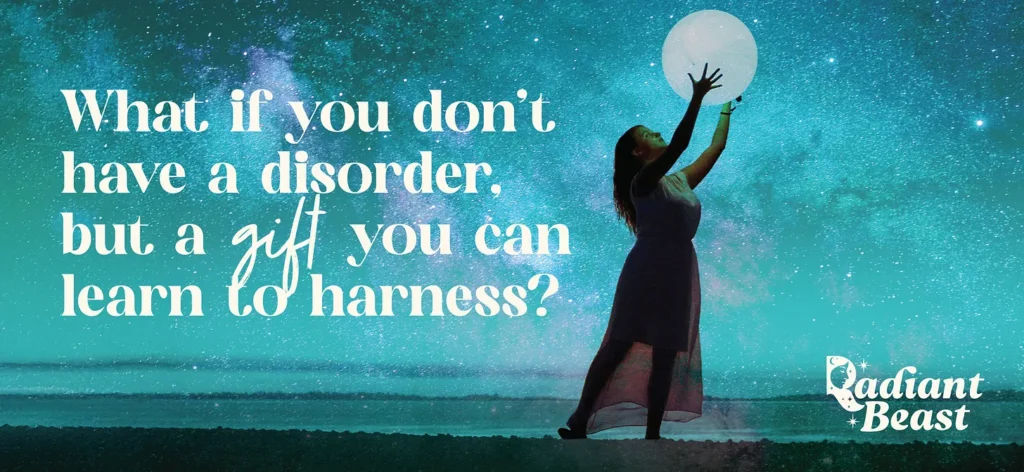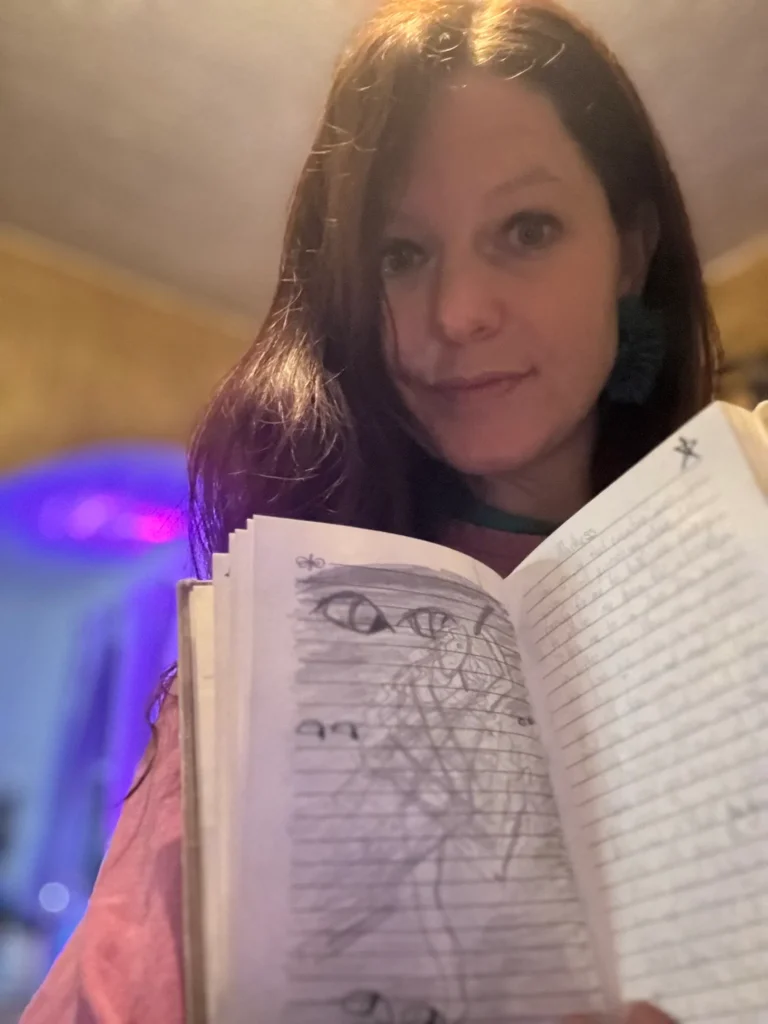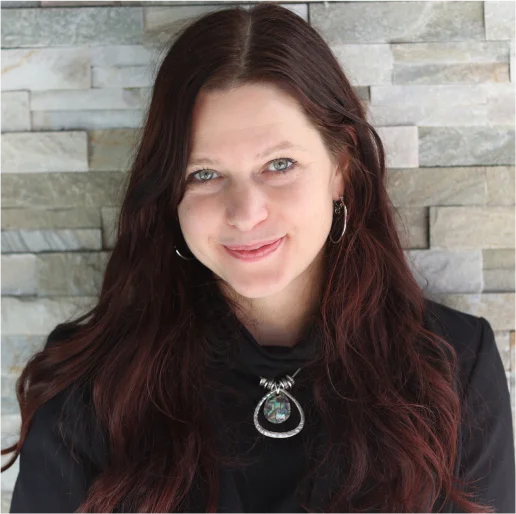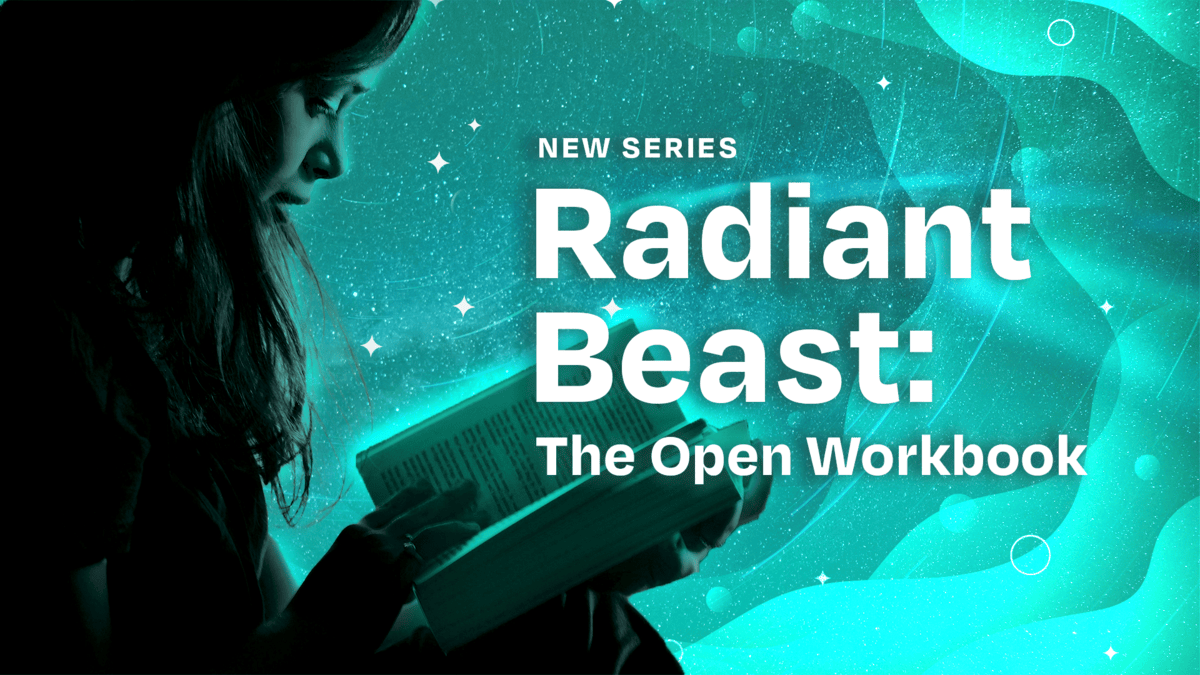
What if everything you’ve been taught to fear in yourself—your intensity, your sensitivity, your pull toward altered states—wasn’t a sign of disorder, but evidence of a deeper gift waiting to be properly fueled, understood, and harnessed?
Listen to the audio version:
(New to this series? I’m so glad you’re here. I recommend starting with Radiant Beast: The Open Workbook series announcement, which provides the foundation for everything that follows. After that, feel free to explore the articles in any order. Please remember that tapering psychiatric medications can be dangerous; it should always be done gradually and with the guidance of a qualified provider. It’s important to research safe practices and stay informed. You can find additional resources at Metabolic Collective’s Safe Tapering page.)
I’ve always loved nostalgia and have kept many relics from my childhood, tucked away in bins in my basement art studio. Every so often, I sift through old boxes and leaf through forgotten journals, amused and surprised by long-lost reflections. Recently, while flipping through a journal from around age twelve—filled with dream entries, sketches, and musings about my first feelings of love—I found something unexpected: a poem I wrote about my fear of madness when I was twelve years old, but had no memory of writing.
Madness
Below the poem, in a small hand-drawn box, I wrote:

My first experience of psychosis—what I now understand as an altered energetic state of consciousness, a symptom of metabolic dysfunction—wouldn’t occur until sixteen years later, at age twenty-eight. And just as the poem foreshadowed, when the altered state took hold, I had no insight that I had lost touch with reality.
Finding this poem felt eerie and uncanny: almost unbelievable, a childhood premonition. Had I stumbled upon it before discovering metabolic therapies, it likely would have triggered despair, reinforcing the feeling that I was trapped in an illness, a tragic “incurable disease,” as my twelve-year-old self wrote. It would have felt like an inescapable nightmare come to life.
Discovering it now just strengthened my commitment to this new series, Radiant Beast: The Open Workbook. Metabolic therapies have reshaped my understanding of bipolar I disorder, leading to a profound sense of agency and, ultimately, reconciliation.
In sharing my metabolic therapy journey on podcasts and at events, one question comes up often: “Did you ever have symptoms of bipolar I disorder before your seemingly out-of-the-blue psychosis at twenty-eight?” My answer has always been no. In retrospect, I can see that I experienced hypomania throughout my early adulthood, but until my prolonged altered state of consciousness, I had always viewed it as an asset, an intrinsic part of who I was: energetic, driven, focused, and passionate. Those qualities helped me excel as a student and as a young social entrepreneur.
But lately, I’ve begun to see the early signs of my illness in a new light, as the expressions of a gift that was unintentionally mismanaged and improperly fueled.
Lace up your running shoes & head out the door!
One thing meditation has taught me is that just because we have a thought doesn’t mean we have to claim it. Thoughts are less like immutable traits and more like clothes we choose to wear. Being selective matters, because some thoughts serve us far better than others. Some thoughts are powerful: less like garments and more like the perfect pair of running shoes, something that doesn’t just alter how you look but fundamentally changes how you move through the world. Perhaps it’s better to call them revelations.
Nearing the end of 2025, more than four years into my journey with metabolic therapies, I finally had such a revelation. Metabolic therapy is an umbrella term for dietary and lifestyle interventions that improve mitochondrial health. Many of these practices, such as shifting the body’s fuel source to ketones or experiencing the endorphins of exercise, bring immediate benefits for many people. They also exert long-term effects that gradually strengthen mitochondria and reshape metabolism over time. My regimen centers on a therapeutic ketogenic diet— vegetarian, in my case—and is anchored by consistent exercise, quality sleep, meditation, and other mindset-shaping practices. Together, this combination has transformed my life and expanded my sense of what is possible.
When the revelation came to me, my first reaction was that I wished I had discovered it years earlier. But even though I had to wait for the muse to strike, I now feel called to share this simple but transformative idea more widely, because it has practical utility:
With this new perspective, so much of my life clicked into place, like a Magic Eye picture suddenly emerging from the static. The magical part is how it can be hidden in plain sight, elegantly and purposefully encoded in the noise.
I began revisiting my childhood and noticing new things. I got my first book on invoking lucid dreams around the age of ten. My dreams were often vivid, technicolored and majestic, but sometimes terrifying. Becoming lucid in nightmares allowed me to transform them. Becoming lucid in fantastical dreams allowed me to savor them and carry more of their essence into waking life, like an elixir.
In addition to being enchanted with the dream world, I had a natural spiritual orientation. I found a multitude of ways of entering brief, controlled altered states through instinctive meditation practices that I can still remember in detail. Sometimes the weather made me feel as if I were dissolving into the air. Before a storm, or on certain warm Midwestern evenings when the sky felt boundless and a soft breeze carried pink-hued clouds across a luminous blue, I would feel compelled to lie down and gaze upward until my vision blurred and I almost felt pulled out of my body. The air around me would grow tactile, each particle gleaming with shifting iridescence.
Revisiting the Madness poem, I can see that I sensed the danger of my wiring even then; I already perceived a potential threat in how I was mentally, emotionally, and energetically. I knew I was prone to a heightened imagination that made me feel a little disjointed from the world, in ways I often relished but also, perhaps mostly subconsciously, understood as vulnerabilities.
I can’t help wondering how life might have unfolded differently if, at that age, I had been taught ways to understand and work with my own energy. I had no idea I was overwhelming my cells with far more glucose than my hard-wiring could handle or that fueling my body with ketones would help protect and optimize both my physical and mental health. Once ketosis became the foundation for steadier energy, every part of my life improved. I became more focused and balanced.
A combination of biological, psychological, and spiritual practices might have helped me honor my depth of feeling and sensitivity and learn to use them with skill. Now that these practices are part of my metabolic therapy regimen, I see that they require discipline and devotion, yet I wouldn’t trade them for anything because of how deeply they enrich my life.
I sometimes imagine how these tools might have changed my childhood and certainly my early adulthood. They might have spared me nearly a decade of an improperly fueled, mismanaged gift that masqueraded as chronic illness for far too long.
Transformers: Turning on the light
Radiant Beast invites those who feel a sense of connection to explore energy, consciousness, and the metabolic architecture of the mind. It is a call to form a new relationship with your own inner electrical grid.
If I had to summarize the power of metabolic therapies with just one metaphor, my initial treatments—antipsychotic medications—were akin to lowering the current of my body and mind enough to create stability, yet leaving me with the sense that my life force had been dimmed, and I was stumbling around in the near dark. Metabolic therapies, on the other hand, have been like installing the transformer I needed to use my full current efficiently, bringing bright illumination back into my life.
A transformer doesn’t diminish energy; it refines it. When voltage is too high to flow directly into a home or a machine, it’s stepped down through coils that make the current usable. I believe the same can be true for human consciousness. Some of us are wired to receive tremendous energetic input—from emotion, intuition, creativity, or perhaps even what Jung called the collective unconscious.
High voltage can overload circuits, manifesting as chaos and mania, and, in the worst cases, blowing fuses. But by strengthening mitochondrial health, increasing both the quantity and quality of mitochondria, and fueling the body with ketones—a steadier, more balanced energy source that avoids the sharp fluctuations of sugar—it becomes possible to create a powerful equilibrium: lowering the voltage while still accessing maximum current. From there, you can begin to intentionally tap into heightened energetic states in a way that is sustainable and beneficial rather than destabilizing.
The workbook is already working!
Before discovering metabolic therapies, I remember a friend telling me I could meditate my way into wellness. I felt misunderstood and frustrated. Despite being an avid meditator, I believed I was at the mercy of my biology, and at the time, antipsychotics felt necessary to manage my bipolar 1 disorder.
When I learned about ketogenic therapy, I saw its promise as a potent biochemical treatment powerful enough to halt seizures in epilepsy. Ketosis has medication-like effects on the brain and body, with measurable impacts on neurotransmitters, inflammation, and mitochondrial health. I still believe these metabolic tools are essential for my continued stability.
Like many who have found remission from serious mental illness, I initially felt grief for the years lost to misunderstanding and, unintentionally, improperly fueling my biology. Yet more than anything, I am overcome with awe and gratitude for the reunion with my true self. I continue to be amazed that even after decades of meditation, breathwork, and visualization, metabolic therapies have accelerated my ability to go deeper inward, where I keep reaching higher inner summits that reshape my perspective. I believe transformative spiritual elevation has no upper limit. We can all keep expanding our capacities, honing our faculties. I don’t see these practices as otherworldly, but as ways of deepening our sensory experience of the world and strengthening our ability to artfully steer our own consciousness in daily life. I feel able to seek expansiveness rather than settle for constriction. I am committed to imagination, intellectual stimulation, spiritual practice, and connecting with a community I can grow alongside.
Even with Radiant Beast only newly launched, I’m already discovering a provocative world I never knew existed. Beyond the extraordinary community I’ve met through metabolic psychiatry, I’m now meeting people who navigated prolonged altered states through entirely different pathways, often interpreting their experiences as spiritual or symbolic rather than pathological. I want to learn from as many of them as possible: their daily practices, their spiritual frameworks, their ways of working with energy.
One of the first people to reach out had always understood his experiences as spiritual awakenings, bypassing the medical model entirely. He left a letter in the comments of my first article:
Finding community instead of isolation is one of the most powerful forces in life. When I read that Michael had also been using language like “swimming lessons” for decades, I got goosebumps. My goal with this series isn’t to be original but to find kindred spirits. We’ve since connected, and he is already helping compile a resource list for Radiant Beast based on his extensive knowledge accumulated over years of exploration and research. I am so grateful and this feels like an astonishing triumph after publishing only one article: proof that the workbook is working exactly as I hoped it would. I cannot wait to see how it will evolve.
As I have begun watching interviews on Michael’s The Other Side of Things, exploring modalities that are relatively new to me in the context of healing metabolic dysfunction—spiritual, symbolic, shamanic—I feel both deeply curious and a bit daunted. Many perspectives feel expansive and exhilarating, while some appear potentially dangerous due to how easily they can be misunderstood or exploited: still, mainstream psychiatry carries just as many paradoxes. I am personally fascinated by the overlap between ancient spiritual and fasting practices across cultures, vision quests, and rituals that modulate metabolism and also seek meaning in natural altered states. What feels indisputable—and why I believe it is important to explore topics like this in Radiant Beast—is the need for nuanced dialogue grounded in deep respect for subjective, multicultural lived experience.
Discovering a transformative alternative in metabolic therapies that I once didn’t know existed has opened a new curiosity in me, along with a humility about how much we still do not understand. It is difficult to define, let alone treat, an illness that has no agreed-upon physiological state; even the word “mental” points us back to the mind and to consciousness, the most persistent and perplexing mystery in both science and philosophy.
My goal in this series is not to choose a single explanation for altered states or to adopt any definitive perspective. It is to stay open, to learn, and to welcome complexity and plurality. The tone of this workbook will remain exploratory rather than dogmatic, even when I discuss the therapy I feel most personally devoted to: therapeutic ketosis. For me, personally, fueling my body with ketones has been a cornerstone that supports my stability and allows me to deepen many other practices. It has also transformed how I understand altered states by revealing the potential of brief, safe, and controlled experiences to catalyze growth and inner evolution. In addition to sharing my own practices, I am eager to learn from others.
If you haven’t already, you’re invited to share your reflections on altered energetic states of consciousness by responding to the prompts in Radiant Beast: The Open Workbook series announcement. I’ll continue adding new prompts as the series unfolds, but the first set will remain foundational. I’m deeply grateful to everyone who has contributed so far.
Developing this workbook in real time with you is about more than writing and reflecting. It is about connection, adventurous learning, and co-creating something that blends the theoretical with the experiential. One day, I hope to coalesce this series into a completed book. Yet I suspect I will look back on these early stages as the most fun. I see Radiant Beast: The Open Workbook as a choose-your-own-adventure series that will lead me into unexpected real-world treks: new friendships, encounters with extraordinary thinkers, and tools that support our shared metabolic, spiritual, and cognitive practices. I could not be more excited for how this dialogue will shape my evolution—and hopefully yours too, if you choose to lace up your running shoes and journey through this rugged, verdant terrain beside me and this growing community of seekers.




